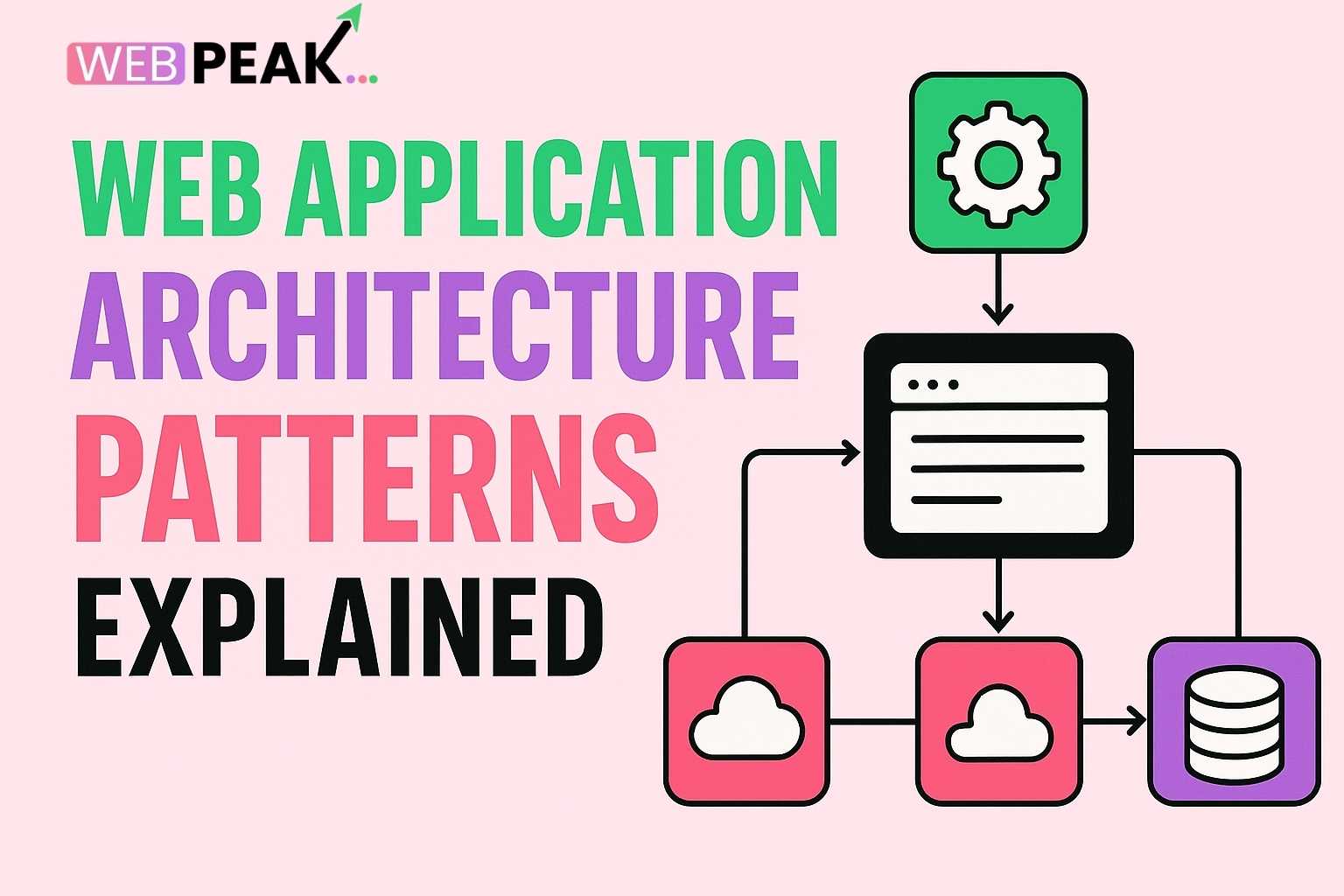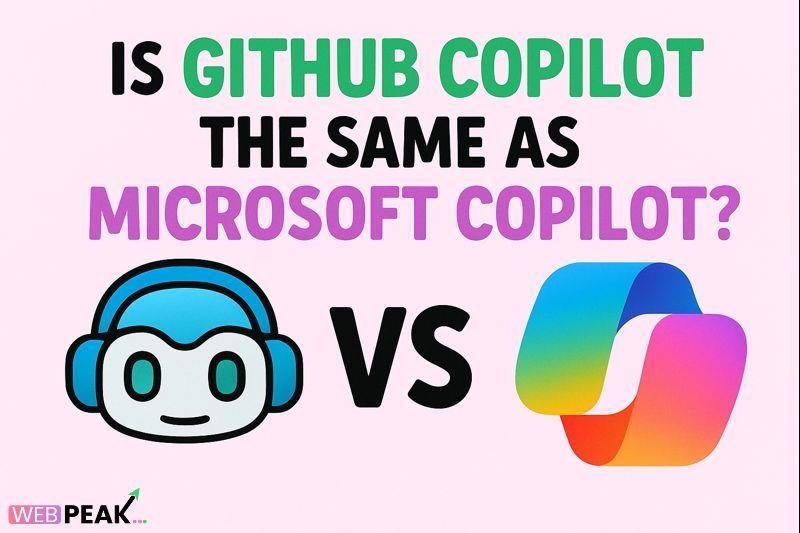Web Application Architecture Patterns Explained
Understanding web application architecture patterns is essential for developers, architects, and businesses aiming to build scalable, maintainable, and high-performing applications. A well-designed web application architecture defines how different components interact, ensuring seamless performance, security, and flexibility. Whether you're building a single-page application or a complex enterprise solution, selecting the right architecture pattern determines the long-term success of your project. In this guide, we’ll explore the most common web application architecture patterns, their benefits, challenges, and best practices for choosing the right one for your needs.
What is Web Application Architecture?
Web application architecture is the blueprint that defines how web apps are structured, how they communicate with each other, and how users interact with the system through the internet. It includes the client-side, server-side, databases, APIs, and other integrated services. A good architecture ensures efficiency, scalability, and maintainability while allowing for flexibility in feature development.
In simpler terms, web application architecture determines how the web app’s components—like front-end interfaces, back-end logic, and data storage—work together to deliver functionality to users. Choosing the right pattern is not only a technical decision but also a business one, as it impacts performance, scalability, and future growth.
Why Web Application Architecture Matters
Web architecture is the backbone of any web-based system. It defines how the app operates under load, how it can evolve with time, and how it remains secure. The right web architecture pattern:
- Improves scalability to handle growing user traffic
- Increases system performance and response times
- Simplifies debugging, testing, and maintenance
- Enhances user experience by reducing latency
- Supports seamless integration with APIs and third-party services
Core Components of Web Application Architecture
Before diving into the architecture patterns, it’s essential to understand the key building blocks of any web app:
- Client-Side (Frontend): The visual and interactive part of the web app that users engage with. Technologies like HTML, CSS, JavaScript, and frameworks such as React, Angular, or Vue.js are commonly used here.
- Server-Side (Backend): Handles business logic, processes requests, and communicates with the database. It’s typically built with Node.js, Python (Django/Flask), Java (Spring Boot), PHP (Laravel), or Ruby on Rails.
- Database: Stores and retrieves application data. Common databases include MySQL, PostgreSQL, MongoDB, and Redis.
- APIs: Enable communication between different services and components using REST or GraphQL.
- Load Balancers: Distribute incoming traffic across multiple servers to improve performance and reliability.
Common Web Application Architecture Patterns
There are several architecture patterns used in modern web application development. Each comes with unique benefits, limitations, and ideal use cases. Below, we explore the most popular ones.
1. Monolithic Architecture
In a monolithic architecture, all application components—frontend, backend, and database—are bundled together as a single unit. It’s a traditional pattern that’s easy to develop and deploy but can become complex as the application grows.
Advantages:
- Simple to develop and test initially
- Faster deployment process
- Easier debugging in small applications
Disadvantages:
- Difficult to scale individual components
- Updating or modifying a feature can affect the whole system
- Longer deployment times for large applications
2. Microservices Architecture
Microservices architecture breaks down an application into smaller, independent services that communicate via APIs. Each service handles a specific business function, making the system more flexible and scalable.
Advantages:
- Independent development and deployment of services
- Improved fault isolation—issues in one service don’t affect others
- Scalable and easier to maintain
Disadvantages:
- Increased complexity in managing multiple services
- Requires strong DevOps practices
- Challenging to maintain data consistency across services
3. Serverless Architecture
In a serverless web architecture, developers focus solely on code, while cloud providers handle infrastructure management. Services like AWS Lambda, Azure Functions, and Google Cloud Functions are commonly used.
Advantages:
- Reduces infrastructure management overhead
- Auto-scaling based on demand
- Cost-effective—pay only for actual usage
Disadvantages:
- Vendor lock-in concerns
- Limited long-running process support
- Potential latency during cold starts
4. Micro-Frontend Architecture
Micro-frontend architecture extends the microservices concept to the frontend, allowing teams to develop and deploy independent frontend components. This pattern works well for large, complex web applications.
Advantages:
- Faster development cycles through team autonomy
- Independent deployment of UI components
- Flexibility to use multiple frontend frameworks
Disadvantages:
- Complex integration of multiple frontend modules
- Potential inconsistencies in design and user experience
5. Event-Driven Architecture
An event-driven web architecture is centered around producing, detecting, and responding to events. It’s highly suitable for applications that require real-time updates like chat apps or stock trading platforms.
Advantages:
- Asynchronous and real-time communication
- Highly scalable and responsive
- Loose coupling between services
Disadvantages:
- Difficult debugging and testing
- Requires robust monitoring and event management
6. Progressive Web Application (PWA) Architecture
PWA architecture combines web and mobile app experiences, allowing users to access features offline and install apps directly from their browsers. It uses modern APIs, service workers, and caching mechanisms to improve performance.
Advantages:
- Offline functionality and fast loading times
- Enhanced user engagement
- Reduced development cost compared to native apps
Disadvantages:
- Limited access to some native device features
- Browser compatibility issues in older versions
Choosing the Right Web Application Architecture Pattern
Selecting the right architecture depends on several factors, including business goals, team expertise, and scalability requirements. Here’s a checklist to help you make the right decision:
- Assess the size and complexity of your project
- Define scalability and performance needs
- Consider your team’s technical skills
- Estimate long-term maintenance costs
- Ensure data security and compliance
- Evaluate your hosting and cloud infrastructure
Best Practices for Web Application Architecture Design
- Use caching and CDN for faster content delivery
- Implement API gateways for efficient service communication
- Adopt CI/CD pipelines for automated deployment
- Monitor application performance continuously
- Ensure modular design to simplify scaling
- Use modern frameworks and security protocols
Actionable SEO Checklist for Web Application Architecture Pages
- Include the primary keyword “web application architecture patterns” in the title, introduction, and at least two subheadings.
- Use long-tail keywords such as “types of web application architectures” and “how to design web application architecture.”
- Add schema markup for FAQ sections.
- Ensure internal and external linking to authoritative sources.
- Use descriptive alt tags for any visual elements (if added later).
- Keep URL slugs short and keyword-rich (e.g., /web-application-architecture-patterns/).
Frequently Asked Questions (FAQ)
1. What are the main types of web application architecture?
The main types include monolithic, microservices, serverless, micro-frontend, and event-driven architectures. Each has unique benefits and is suited for different project sizes and goals.
2. Which architecture is best for large-scale web applications?
Microservices or event-driven architectures are generally the best for large-scale applications, as they allow independent scaling and better fault tolerance.
3. How does web application architecture affect performance?
A well-designed architecture optimizes communication between components, reduces latency, and ensures efficient data management—leading to faster performance and better user experience.
4. What is the difference between frontend and backend architecture?
The frontend focuses on the user interface and experience, while the backend handles logic, data processing, and server-side operations. Both must work together seamlessly for a functional application.
5. How can I secure my web application architecture?
Use HTTPS, implement authentication and authorization mechanisms, sanitize inputs to prevent injections, and regularly update dependencies to avoid vulnerabilities.
Conclusion
Understanding and implementing the right web application architecture patterns is vital to creating scalable, reliable, and high-performance web applications. From monolithic to microservices and serverless models, each pattern offers unique strengths and trade-offs. The key is to align your architecture choice with your project’s requirements, scalability goals, and long-term vision.
If you need professional help designing or optimizing your web application architecture, WEBPEAK is a full-service digital marketing company offering expert Web Development, Digital Marketing, and SEO solutions tailored to your business needs.





